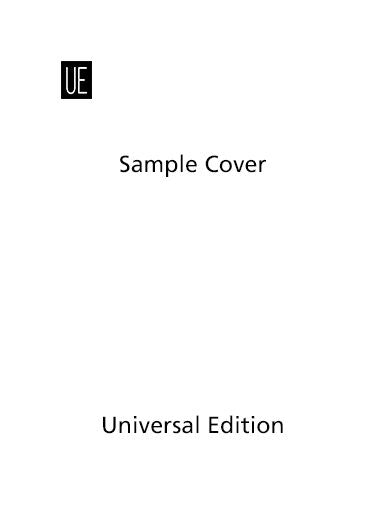
UNIVERSAL EDS/WIENER/PRESSER - 864872
Bartok Andante for piano
Composer: Béla Bartók
Publisher: Universal Edition
Instrumentation: Piano
Bartok Andante for piano
Juilliard Store
144 West 66th Street
New York NY 10023
United States
Choose options
Bartok Andante for piano
Juilliard Store
144 West 66th Street
New York NY 10023
United States
Bartok Andante for piano
Juilliard Store
144 West 66th Street
New York NY 10023
United States
Two manuscripts of the "Suite", Op. 14 are held in the archive of Peter Bartók, in Florida. One of these is the autograph sketch of the work (without dynamic signs), the other is a hand written copy prepared by Márta Ziegler, Bartók's first wife, with amendments by Bartók. This latter was the engraving copy of the work; (…) The "Andante" can be found in both American manuscripts of the "Suite". What could have induced the composer to omit it from the work's final version? Before we can provide an answer, let us first examine the entire cycle (in its final form). Each of its movements - not unlike two hundred years earlier, in the baroque suites - evolves out of the basic formula of a stylized dance. In the first movement Bartók combines the throb of the baroque concertos with the rhythm of the Hungarian swineherd's dance. The following fast movement: scherzo, in the Beethovenian meaning of the word; even its tetrapodic segmentation is reminiscent of the scherzo of the "9th Symphony". The next fast movement is a characteristic Bartókian type of motion: a chase (as such, it forecasts the mood of certain scenes in the "Miraculous Mandarin"and "Cantata Profana"). After the three fast movements the scene suddenly changes: a heartbreaking slow dance movement is heard. This enormous contrast of moods is incredibly effective, particularly as it is coupled also with the finale-function: the work concludes with this slow movement. In order to preserve this effect, the composer had to forego the other slow movement. From the point of view of dramaturgy Bartók's decision was entirely correct in settling on the four movement format. The omitted "Andante", however, still deserves posterity's attention. It is a kind of minuet built on the basis of F#, with a theme consisting of major thirds (enharmonically: diminished fourths). It is woven with form units of 4, 8 and 12 bars, all of which containing 10 or 12 tones of the chromatic scale, without abandoning the tonal ground for one instant. It is an important workshop-study - and music worthy of its author. (F. Bónis)
